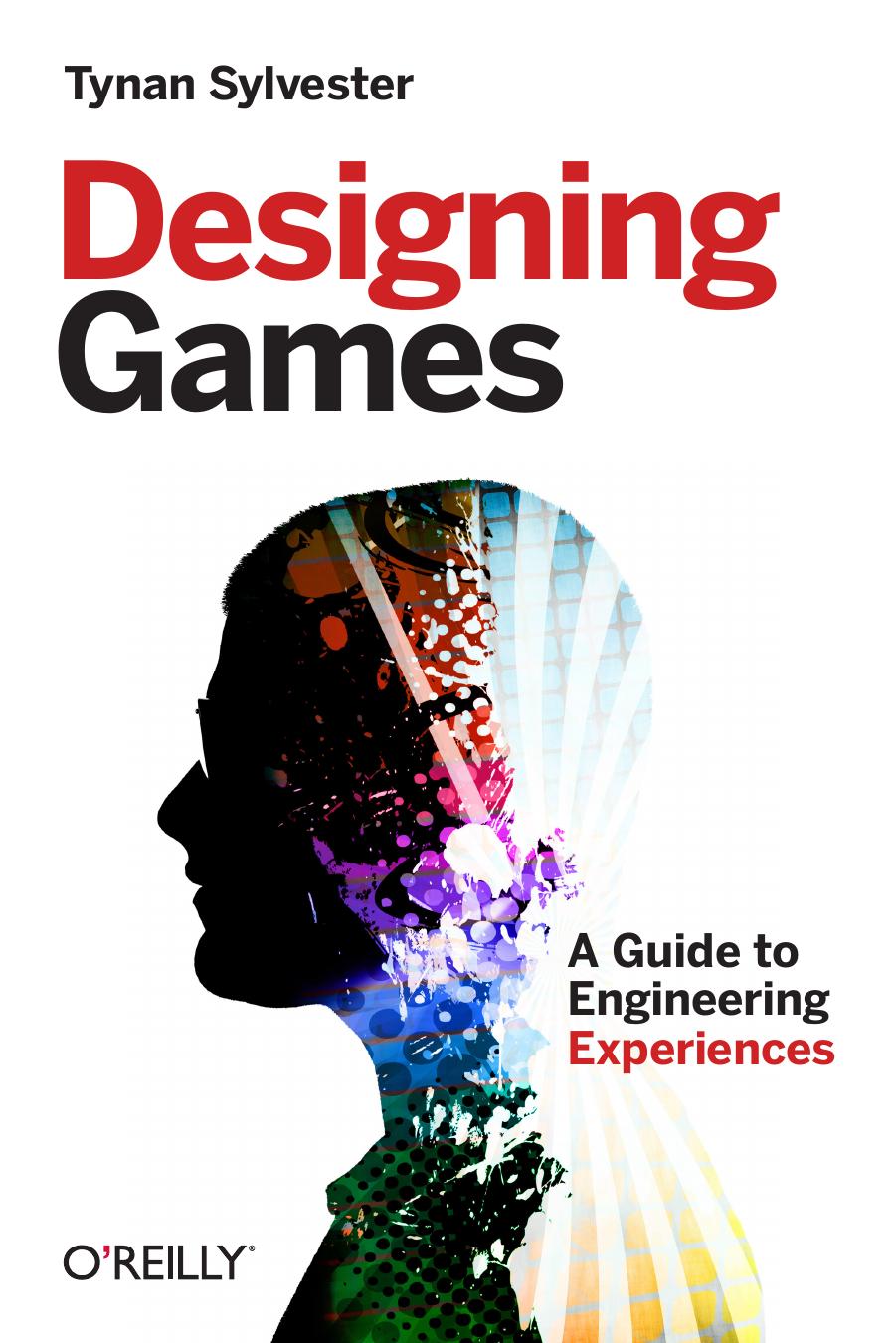Designing Games by Tynan Sylvester

Author:Tynan Sylvester [Tynan Sylvester]
Language: eng
Format: epub, pdf
Tags: COMPUTERS / Programming / Games
ISBN: 9781449337926
Publisher: O’Reilly Media
Published: 2013-01-02T16:00:00+00:00
Emergent Reinforcement Schedules
So far we’ve looked at explicitly designed reinforcement schedules. Designers build these schedules like Skinner built his boxes, deciding with mathematical precision exactly what the player will get after each action. But this kind of explicitly defined reinforcement schedule is the exception, not the rule.
Most reinforcement schedules are not designed directly. Rather, they emerge from lower-level game systems.
For example, in chess, a player will tend to capture a piece every X minutes. This isn’t because a designer set the variable X. Rather, the interval X emerges naturally from the interaction of the lower-level mechanics of the game. In chess, the pacing of captures is very spiky—players construct interlocking defensive positions over many minutes, and then destroy them in a flurry of captures. Since that exchange could happen on any turn, chess emergently presents a variable ratio reward schedule. And if the rules changed, so would this schedule.
Players respond to emergent reward schedules the same way they respond to explicitly defined ones. Often, they’re the difference between a game that grabs you and one that lets you drift away.
For example, many shooters have a multiplayer deathmatch mode. The goal of a deathmatch is to kill as many other players as possible. At the end of the match, the players are shown their kill count. This kill count is a reward, because it feels good to get a high kill count and bad to get a low one. In the language of rewards, each match is like a defeated orc, except that it spits out kills instead of money. But whereas the orc’s gold drops are determined by an algorithm, the kill count emerges from the game’s combat design. Different map layouts, weapon tunings, and matchmaking systems produce different patterns of kill counts.
In some deathmatch games, kill counts are very consistent. A good player always gets many kills, while a poor player always gets few kills. This produces an emergent reinforcement schedule that resembles a fixed ratio. Like all fixed ratio schedules, it creates a motivation gap right after getting the reward (i.e., right after finishing a match). After a match ends, players aren’t compelled to start a new one because they know exactly what they’ll get, and they know they have to finish a whole match to get it. Deathmatch modes like this don’t tend to be very popular because they are monotonous. There are no great victories or crushing losses. Just match after match, each offering the same predictable reward.
Other deathmatch games are much more random. A player might come last in one match and first in the next. Skill affects the outcome, but one lucky tactical break or a few good shots can turn defeat into glorious victory or vice versa. This resembles a variable ratio reinforcement schedule, and it produces similar motivational results. Players know that any match could be the one where they get a lucky 30-kill streak, so they’re always motivated to play.
Once you look, you see emergent reinforcement schedules everywhere. Many players put
Download
This site does not store any files on its server. We only index and link to content provided by other sites. Please contact the content providers to delete copyright contents if any and email us, we'll remove relevant links or contents immediately.
| Adobe | Digital Audio Production |
| Digital Photography | Speech & Audio Processing |
| Video Production |
Music for Film and Game Soundtracks with FL Studio by Joshua Au-Yeung(4199)
The Pro Tools 2023 Post-Audio Cookbook by Emiliano Paternostro(4178)
The Ultimate Studio One Pro Book by Doruk Somunkiran(4134)
Video Editing Made Easy with DaVinci Resolve 18 by Lance Phillips(3529)
The Music Producer's Creative Guide to Ableton Live 11 by Anna Lakatos(3290)
Adobe Animate 2022 for Creative Professionals by Joseph Labrecque(2760)
Significant Zero by Walt Williams(1948)
Hands-On Game Development with WebAssembly by Rick Battagline(1838)
Unity 2020 Virtual Reality Projects - Third Edition by Jonathan Linowes(1817)
Turing's Cathedral by George Dyson(1651)
The Freelance Manifesto: A Field Guide for the Modern Motion Designer by Joey Korenman(1603)
Blender for Video Production Quick Start Guide by Allan Brito(1562)
EPUB From the Ground Up by Jarret Buse(1549)
Voicebot and Chatbot Design: Flexible conversational interfaces with Amazon Alexa, Google Home, and Facebook Messenger by Rachel Batish(1549)
OpenGL 4 Shading Language Cookbook by David Wolff(1514)
Learning D by 2015(1505)
OpenGL 4 Shading Language Cookbook Second Edition by David Wolff(1469)
Windows 7: The Missing Manual by Pogue David(1413)
Skin by Unknown(1399)
